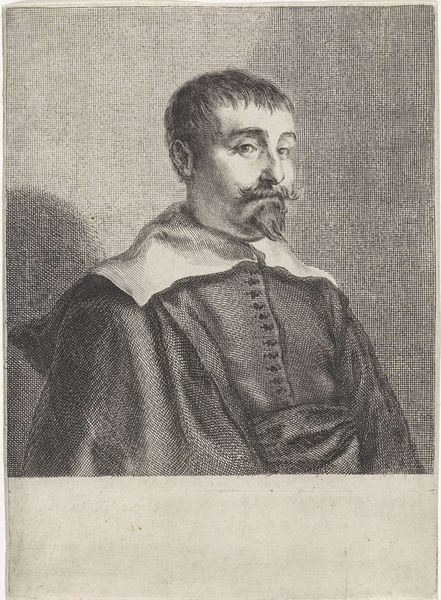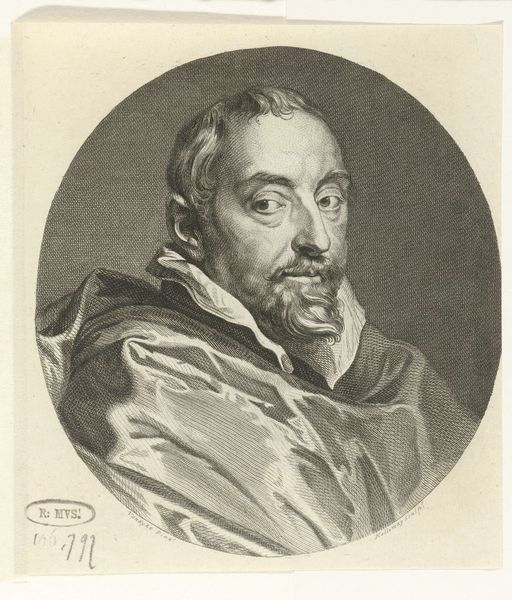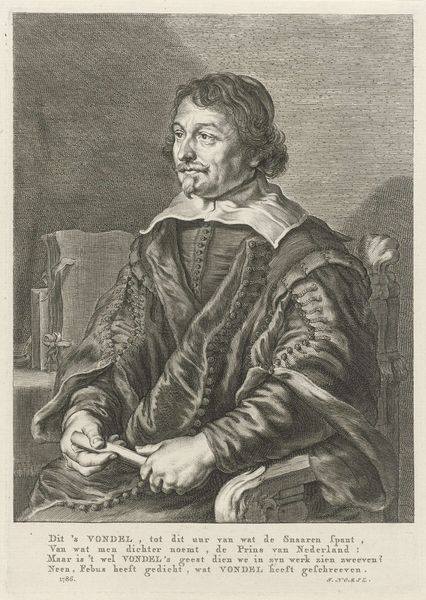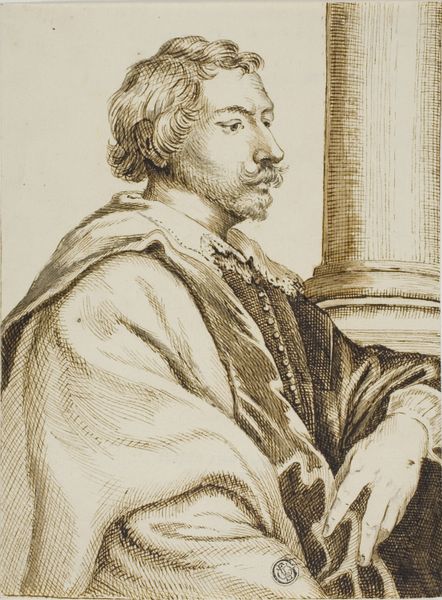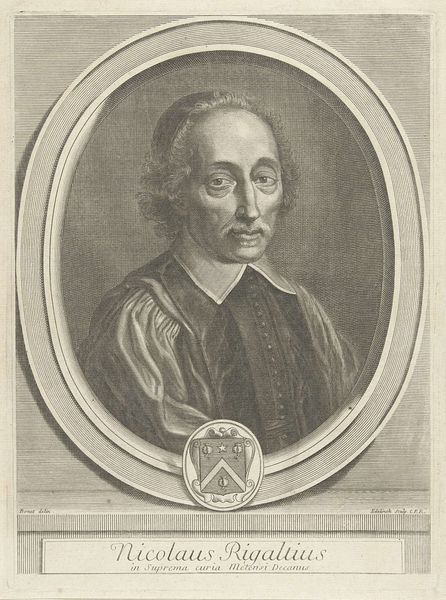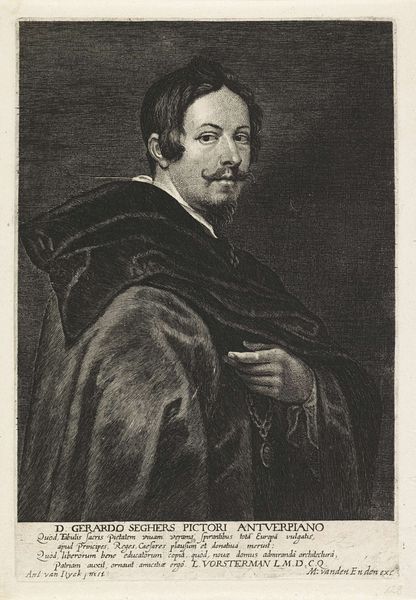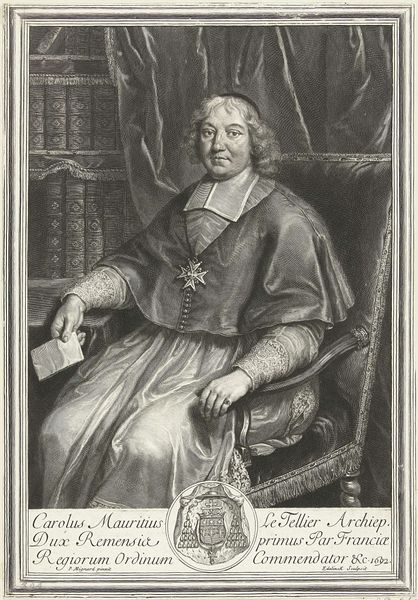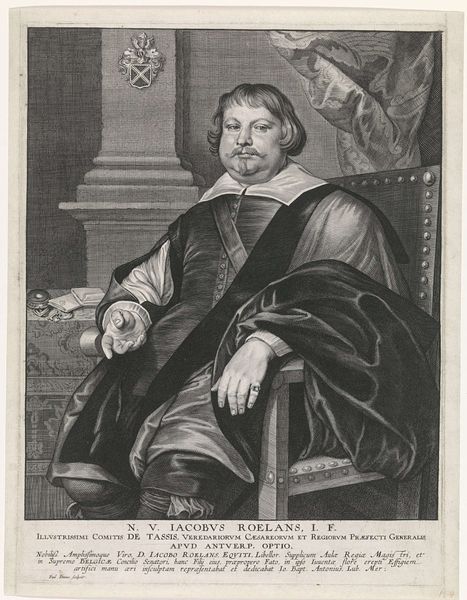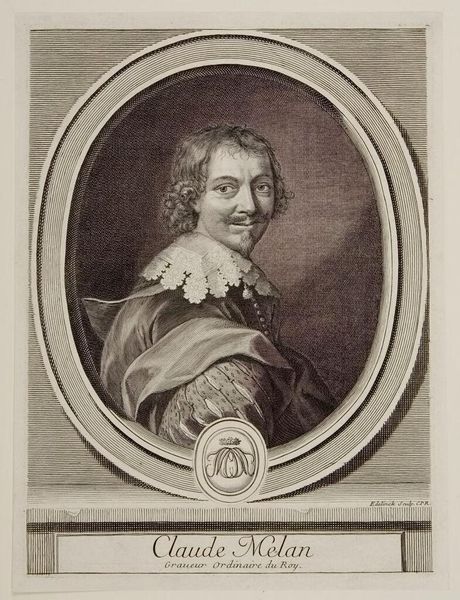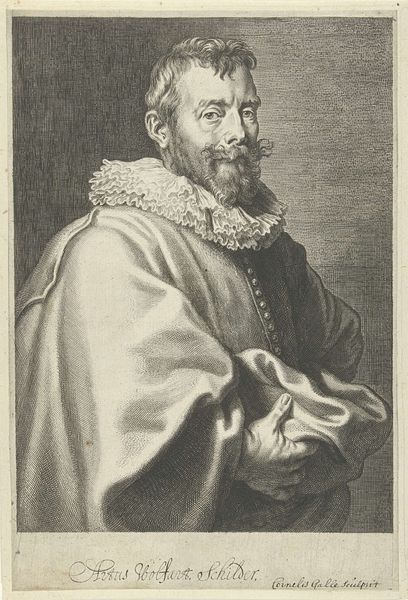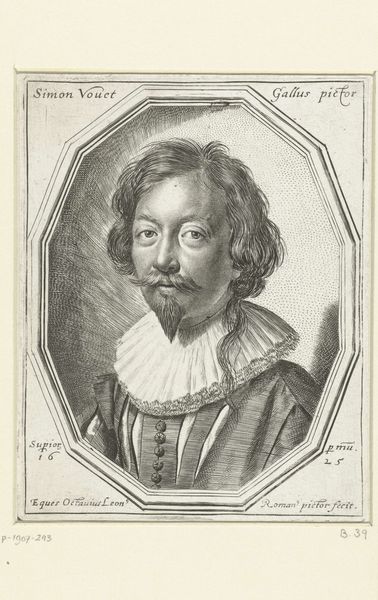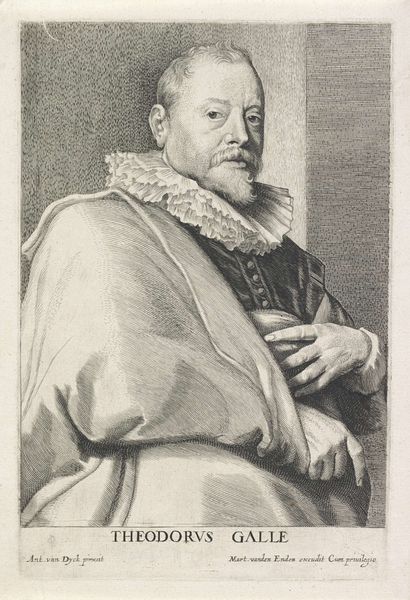
print, engraving
#
portrait
#
baroque
# print
#
form
#
line
#
academic-art
#
engraving
Dimensions: height 240 mm, width 163 mm
Copyright: Rijks Museum: Open Domain
Editor: We're looking at "Portret van Cornelis Schut (I)" by Lucas Vorsterman I, a print from sometime between 1630 and 1646. It has this really classical feel with the clean lines, but also a Baroque opulence in the sitter's clothing. How do you interpret the role of portraiture during this period? Curator: Well, during the Baroque period, and specifically here in the Netherlands, portraiture was often deeply intertwined with status and the public image of the sitter. What details do you notice that might contribute to this sense of status? Editor: The clothing is really intricate and detailed, suggesting wealth. And the pillar in the background feels very classical, almost like he's aligning himself with some kind of intellectual or artistic legacy. Curator: Exactly. And who do you think controlled access to portraiture? Who was able to commission these? Editor: I suppose it was primarily the wealthy merchant class and nobility. People who had the means to not only commission but also to circulate these images, thereby shaping public perception of themselves and their status. Curator: Precisely. Vorsterman, through this engraving, is participating in a system where imagery and access to representation become powerful tools. What do you make of the inscription at the bottom? "Cum privilegio" indicates copyright, essentially. What implications does that have? Editor: Oh, interesting. It sounds like he’s trying to protect his artistic rights but also potentially controlling the distribution of Schut's image, and consequently, his own artistic reputation. Curator: Indeed. And thinking about it now, who gets represented and how are perennial concerns when exploring visual imagery through social history. Editor: That's fascinating. I had thought it was simply a portrait of a man, but there’s this whole world of societal and political implications embedded in it. Curator: Absolutely! By considering the historical context, the economic factors, and the visual language used, a simple portrait transforms into a potent cultural artifact.
Comments
No comments
Be the first to comment and join the conversation on the ultimate creative platform.

